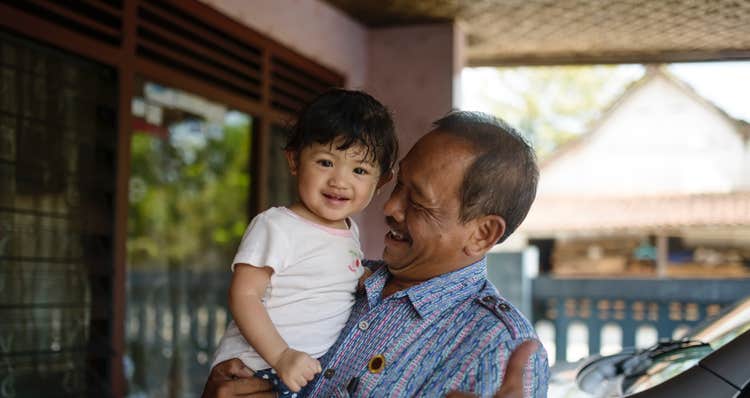Mantle Cell Lymphoma (MCL)


Learning to live with a cancer diagnosis comes with many challenges. You can experience difficult feelings, may have to adjust to changes in your physical health, and learn to cope with a new everyday reality. When you have been diagnosed with an uncommon type of cancer, these anxious feelings can increase, especially when you’re unsure of what to expect.
Affecting only 0.5 to 1 in 100,000 people, Mantle Cell Lymphoma (MCL) is a rare and aggressive type of blood cancer.12 Understanding the disease, its treatment and what options are available for your unique situation can help you feel better adjusted to a life with MCL.

Mantle Cell Lymphoma (MCL) is a type of blood cancer. More specifically, the disease is a rare form of Non-Hodgkin’s Lymphoma (NHL), a term used for different subtypes of cancer of the lymphatic system,2 one of which is MCL.
The lymphatic system is part of our immune system, responsible for protecting us from infection and disease.3 In NHL, cancer develops in one of the body’s main types of immune cells: the lymphocytes – a type of white blood cells also known as B cells. When this occurs, the lymphocytes constantly divide, but don’t develop properly and are unable to protect our body.4 The immune system becomes affected, making you more susceptible to infections.5
With MCL, the cancer develops in the outer part of the lymph node called the mantle zone.6 Lymph nodes are part of our immune system and are small structures that filter harmful substances.7 They also hold the lymphocytes. The cancer can also spread within and outside of the lymphatic system and grow within the bone marrow, spleen, liver or bowel.8
What are the symptoms of Mantle Cell Lymphoma (MCL)?
The most common signs of MCL are the swelling of lymph nodes in the neck, armpit or groin, which can take the shape of a lump.3 If you find a lump on your body that is hard, painless and doesn’t go away after two weeks39 – or any type of lump that worries you - it’s important to go see your doctor as soon as possible. Lumps are often harmless, but can sometimes be a symptom of MCL or other NHL subtypes.39
Experiencing recurrent fever, excessive sweating at night, sudden weight loss and persistent fatigue can also be signs of MCL, though doctors classify them as “B symptoms” as they are less common.310
Later stages of MCL can include diarrhoea, abdominal pains and nausea - symptoms that can easily be associated with other conditions, so it is very normal that you didn’t expect this rare type of cancer to be the cause.3 These signs can occur when the cancer has spread past the lymphatic system to other organs.10 You may also get anaemia due to a lack of red blood cells, and bruise or bleed easily due to a lack of blood-clotting cells (platelets).10
MCL is typically diagnosed with a lymph node biopsy, where part of or all of an enlarged lymph node is removed and checked for cancer cells.10 The disease can also be detected with a bone marrow biopsy, blood and laboratory tests, as well as X-ray or CT (computed tomography) scans.10
Due to its ability to grow and spread quickly, MCL is commonly detected in its later stages.8 People with MCL tend to not show symptoms in its initial phase, making it difficult to detect the disease early.11 To determine the extent of MCL and the best treatment tailored to your need, doctors will stage the condition as follows:8
Stage I | Stage II | Stage III | Stage IV |
|---|---|---|---|
Stage I The cancer cells are located in a single group of lymph nodes. | Stage II The cancer cells are in two separate groups of lymph nodes/on one side of the diaphragm. | Stage III The cancer cells have spread to both sides of the diaphragm and possibly to the spleen. | Stage IV The cancer cells have spread outside of the lymph nodes to other organs. |
How common is Mantle Cell Lymphoma (MCL)?
Mantle Cell Lymphoma is a very rare form of Non-Hodgkin’s Lymphoma, comprising only 2.5% to 6% of all Non-Hodgkin’s Lymphoma diagnoses,12 of which the majority are men with a 3:1 ratio to women.1 The average incidence rate in Europe is 0.5 to 1 cases per 100,000 people.1
Unfortunately, the cause for MCL - and NHL as a whole - is currently not known, but research has been able to pinpoint certain risk factors that may increase the risk of developing MCL and other NHL subtypes:13
- Age: MCL is most prevalent in people aged 65 and over.
- Family: having a close family member with MCL may increase the risk.
- Previous cancer: people who have had cancer and were treated with radiotherapy or chemotherapy could develop NHL later in life. However, the risk is very small compared to the benefit of having had the treatment.
- Auto-immune diseases: certain auto-immune diseases can increase the risk of developing MCL, though it is not clear whether this is because of the disease or its treatment.
- A weakened immune system
- Infections: some viruses or bacteria can increase the chance of developing MCL, but the risk remains small.
Treatment and Care
MCL is a fast-growing and aggressive form of NHL. The majority of people with MCL will be in the later stages of the disease when they receive the diagnosis. Your doctor will decide on the best treatment plan with you depending on several factors, including:6
- Your symptoms
- Your age and general health
- The stage of the MCL
- Your personal feelings towards the different treatments available
A cure for MCL has not yet been found, but in the last decade, treatment options have evolved thanks to advanced studies. Discuss treatment with an MCL specialist who is well-informed on the latest developments and discuss the best option available for you.
Most commonly, MCL is treated with a chemo-immunotherapy regimen, which combines chemotherapy with an antibody treatment.6 If you are not fit enough for chemo-immunotherapy, gentler kinds of chemotherapy that cause fewer side effects are available to ease symptoms.6
Other treatments for MCL include:10
- Radiotherapy: used on Stage I and II, or to relieve symptoms
- Stem cell and bone marrow transplant
- Targeted therapy: the use of drugs to block the growth and spread of the cancer8
- Steroids: used in combination with chemotherapy to make the treatment more efficient10
If the cancer is slow-growing and you’re not experiencing symptoms, your doctor could advise monitoring the progress of the disease with regular check-ups, known as “watch and wait”,14 where treatment is only advised if you start showing signs of MCL. Understandably, you might feel anxious or uncertain about this treatment method and perhaps feel like not enough is being done. Make sure to ask all the questions you may have, so you feel well-informed and comfortable with this approach.
To form a treatment plan that suits your needs best, it’s important to understand your options. Discuss treatment options with your doctor and treatment team, and don’t hesitate to get a second opinion if you feel it is needed.
Living with Mantle Cell Lymphoma (MCL)
Receiving a cancer diagnosis is an overwhelming experience. Additionally, MCL is considered to be a rare type of blood cancer with a low prevalence, so it’s normal to feel alone and misunderstood due to the lack of awareness and understanding about MCL.
MCL can turn your everyday life upside down, and the importance of self-care shouldn’t be underestimated. Treatment can come with a range of side effects such as feeling tired and lethargic, which can affect your self-esteem and relationships.15 Talk to family, friends or your doctor about how MCL impacts you. Counselling has also proven to be a great help for people with MCL and can also help you cope with and talk about thoughts and feelings you may not feel comfortable sharing with loved ones.16
It’s also important to cope practically. Don’t hesitate to ask your doctor and MCL specialists for advice on social services that can support you with matters such as financial support, childcare and work.
Ultimately, it’s important to make lifestyle choices that benefit your emotional and physical health. Eating healthily, exercising if possible, and taking time to relax can help you regain a sense of control over your situation. Implementing a day-to-day routine can also be of help to cope with the unpredictable nature of living with MCL.16
What to ask your doctor?
The list below includes example questions to help start a conversation with your health care provider. There may be other relevant questions based on your symptoms, stage, and medical history that are not listed here.
- How advanced is my disease, and what can I expect?
- What are my treatment options? How much time do I have to decide?
- How long will the treatment take?
- What are the possible side effects? How can I manage them?
- What side effects should I tell you about right away?
- What happens if the treatment doesn’t work?
- How will this affect my everyday life?
- Can I get a second opinion? Should I speak to a specialist?
- Can you suggest a mental health professional I can see if I start to feel overwhelmed, depressed or distressed?
- Can I be referred to patient support groups?
- …
Janssen & Mantle Cell Lymphoma (MCL)
Many great strides have been made so far in diagnosis, treatment and transplants, with more promising therapies in the pipeline. At Janssen, we are committed to advancing research and solutions to meet the needs of patients with Mantle Cell Lymphoma.
We believe it’s important to talk about MCL and raise awareness about the condition and its impact on people’s lives. Our goal is to change the way MCL is understood, managed and diagnosed, addressing the cancer’s challenges with innovative solutions, and to one day make this disease, not just treatable, but also curable.
Glossary
- Indolent lymphoma: Lymphoma that grows and spreads slowly.
- Lymph nodes: small glands that work as filters in the body for harmful substances and contain immune cells or lymphocytes.
- Lymphocytes: white blood cells that are the body’s main types of immune cells.
- Lymphoma: the general name for different subtypes of cancer that start in the lymphocytes.
- Systematic treatment: treatment that affects the whole body.
- Incidence: the proportion or rate of persons in a population who develop a condition during a particular time period.
- Prevalence: The proportion of persons in a population who have a condition at or during a particular time period.
Patient advocacy groups and external sources
This website is developed exclusively by Janssen Pharmaceutica NV. Please note that the patient advocacy groups, and external sources listed below are an additional and independent source of information you might find useful. These groups and sources were not involved in the creation of this website and do not endorse its content in any way.

The Lymphoma Coalition is a global network of lymphoma patient groups, created to spread awareness about the condition and provide a community of support for groups worldwide.

The European Lymphoma Institute is a cross-functional European network dedicated to driving and sharing innovative research. The organisation harmonises the regulatory texts on clinical research within the European Union.

With the hashtag #letstalkaboutbloodcancer, this campaign seeks to raise awareness for blood cancer by having people impacted by blood cancer share their stories.

Each September, organisations all over the world that are dedicated to different types of blood cancer, including MCL, launch campaigns to raise awareness about the disease and its many forms.